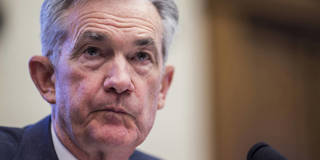In the early 1980s, the chairman of the US Federal Reserve, Paul Volcker, was able to choke off runaway inflation because he was afforded the autonomy necessary to implement steep interest-rate hikes. Today, the Fed is clearly under unprecedented political pressure, and it is starting to show.
CAMBRIDGE – From the early 1980s until the start of the financial crisis in September 2008, the US Federal Reserve seemed to have a coherent process for adjusting its main short-term interest rate, the federal funds rate. Its policy had three key components: the nominal interest rate would rise by more than the rate of inflation; it would increase in response to a strengthening of the real economy; and it would tend toward a long-term normal value.

CAMBRIDGE – From the early 1980s until the start of the financial crisis in September 2008, the US Federal Reserve seemed to have a coherent process for adjusting its main short-term interest rate, the federal funds rate. Its policy had three key components: the nominal interest rate would rise by more than the rate of inflation; it would increase in response to a strengthening of the real economy; and it would tend toward a long-term normal value.